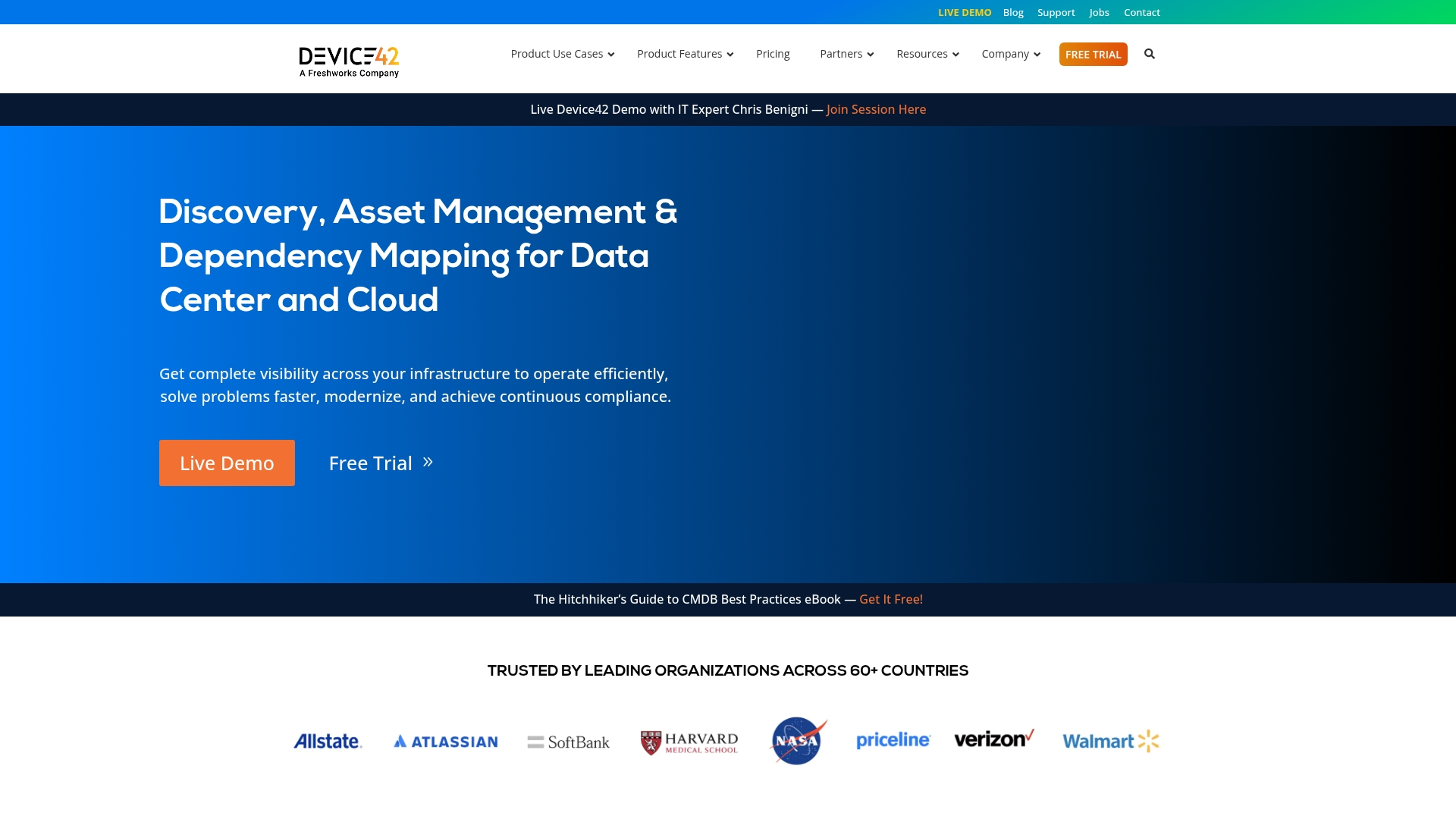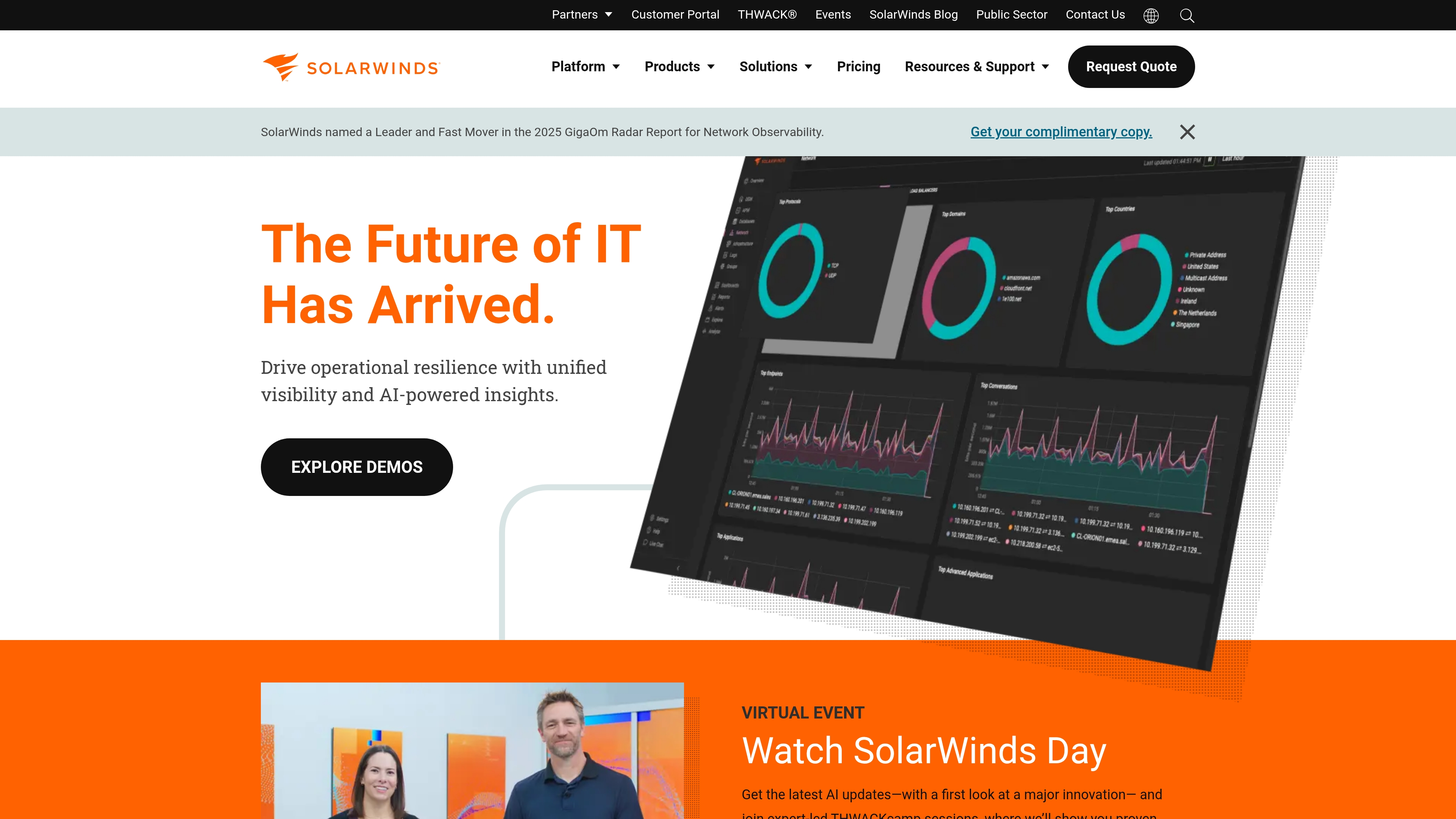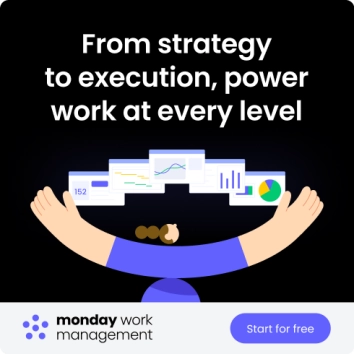Assets represent the tools that keep every workflow and service moving. When asset data lives across spreadsheets and systems, teams lose visibility and time. Asset inventory software brings all that information into one organized workspace, giving every team member the context to act quickly and make better decisions.
Asset inventory platforms like monday service embed asset management directly into daily workflows so teams can track, update, and connect data without switching tools.
This guide outlines how to manage your asset inventory with confidence. It covers key benefits, essential features, and a comparison of leading platforms for asset management. You’ll also find an implementation plan to help you move from setup to execution efficiently.
Try monday serviceKey takeaways
- Asset inventory software centralizes asset data, eliminating manual tracking and spreadsheet chaos.
- Unified systems connect assets, service workflows, and reporting for faster, data-driven decisions.
- Automation and real-time dashboards improve visibility, reduce asset loss, and optimize utilization.
- Modern platforms track physical and digital assets across locations, departments, and teams.
- monday service integrates asset and service management in one workspace for complete operational context.
What is asset inventory software?
Asset inventory software tracks every resource your organization depends on—from laptops and licenses to facilities and tools through its entire lifecycle. It centralizes data in one reliable place, eliminating the guesswork that slows teams down.
This visibility helps everyone make faster, more informed decisions and maintain consistency across departments.
Modern platforms extend beyond tracking. They integrate IT assets, physical equipment, and software tools in one system. With this connection, teams maintain compliance, automate maintenance, and maximize the value of their resources.
Key benefits of asset inventory management software
An integrated asset management system supports smarter operations and faster work. Teams gain clear insight into what assets exist, where they’re located, and how they’re performing. That visibility improves planning, reduces overspending, and helps teams allocate resources strategically.
Service teams resolve issues faster when they have immediate access to an asset’s details, including its history, owner, and warranty. This context supports first-time fixes and more responsive service.
Automated tracking also simplifies audits and reporting. Every asset includes a full history, turning compliance from a scramble into a routine process. These improvements create a stable foundation for continuous operational growth.
How to choose the right asset management platform
The best platform connects all asset types — digital and physical — into one workspace. It should integrate easily with your existing tools, giving everyone real-time visibility and eliminating data silos.
Look for solutions that scale with your organization. Growth often means more assets, users, and workflows. A flexible system adapts without adding complexity, keeping your operations efficient as needs evolve.
Must-have features in modern asset tracking software
Effective asset tracking software delivers real-time visibility and automation that simplify daily work. These systems manage the full lifecycle of each asset — from acquisition to retirement — so teams can focus on higher-impact tasks.
Automation saves time and keeps information consistent, while analytics translate raw data into actionable insights. With mobile access, every team member can update and monitor assets from anywhere.
Top 12 asset inventory software platforms compared
Asset inventory software helps teams track, manage, and analyze every resource that powers their operations. Modern platforms combine automation, visibility, and integration so teams can manage hardware, software, and equipment from a single workspace.
Below are 12 of the most effective platforms for 2025 — each built to help you stay organized, save time, and make smarter operational decisions.
1. monday service
monday service connects asset management, service operations, and ticketing in one no-code workspace. Teams track every asset’s lifecycle, automate maintenance, and link asset data directly to service requests. Real-time dashboards and AI-powered workflows make it easy to spot issues, act quickly, and maintain accurate records across departments.
This connected approach replaces fragmented systems with a unified workspace where IT, facilities, and operations teams share the same live data. monday service also adapts to non-technical users through visual automation and drag-and-drop customization, accelerating adoption and reducing admin work.

Best for: organizations that want a single platform for service management, operations, and asset tracking
Key features
- Centralized asset database with live status and ownership tracking
- QR code generation and mobile scanning for easy check-in and returns
- AI-powered automation for discovery, categorization, and routine
- Role-based permissions for team, site, or department visibility
- Real-time dashboards with analytics and SLA tracking
- No-code customization to tailor workflows across departments
Pricing
monday service offers flexible pricing starting at $26 per seat/month. Every plan includes a free trial and scales easily based on team size and features. Pricing is designed for accessibility and fast adoption across both small teams and enterprise organizations.
Why it stands out
- Unified service operations: Manages assets, service tickets, and projects in one interconnected workspace, eliminating departmental silos
- No-code customization: Empowers any team to build tailored asset management workflows without IT support or technical expertise
- Speed to value: Faster implementation and easier adoption compared to complex legacy asset management systems
2. ServiceNow
ServiceNow delivers enterprise-grade IT asset management software capabilities for complex global environments. It unifies IT, software, and hardware assets under one configuration management database (CMDB), giving teams end-to-end visibility across their infrastructure.

Best for: large enterprises that need advanced automation and governanceKey features
- Unified asset repository with real-time lifecycle tracking
- AI-powered automation for data normalization and workflow management
- Integrated CMDB for incident and change management visibility
- Robust compliance and audit reporting tools
- Role-based access for global teams
Pricing
Custom pricing available upon request. Packages scale by organization size, modules, and asset volume.
Considerations
- High implementation costs and long deployment cycles
- Requires experienced configuration specialists for setup
3. Jira Service Management
Jira Service Management links asset data directly to service requests for full visibility in the Atlassian ecosystem. It simplifies incident resolution by embedding asset information within tickets and workflows.

Best for: IT teams already using Atlassian products
Key features
- Flexible object schemas that allow custom asset types with tailored attributes for any organizational resource
- Automated asset discovery through network scanning and integration with 30+ data source adapters
- Direct integration with Jira workflows, linking assets to service tickets for immediate context during issue resolution
Pricing
- Free for up to 10 users. Paid plans start at $7.53 per user/month for Standard and $13.53 per user/month for Premium. Enterprise pricing available on request.
Considerations
- Assets functionality is included in the Premium and Enterprise tiers
- Requires significant initial setup and configuration compared to more plug-and-play solutions, with a steeper learning curve for teams new to the Atlassian ecosystem
4. ManageEngine AssetExplorer
ManageEngine AssetExplorer provides IT-focused asset lifecycle management with automated discovery, license tracking, and compliance monitoring. It gives teams complete visibility into hardware and software assets.

Best for: IT departments managing complex infrastructures
Key features
- Network discovery with agent-based or agentless scanning
- Built-in CMDB with asset relationship mapping
- Software license tracking and compliance alerts
- Procurement-to-disposal lifecycle automation
- Real-time asset utilization dashboards
Pricing
Pricing available upon request. Licenses are based on device count and feature modules.
Considerations
- Initial setup and customization can be time-consuming, particularly for larger deployments with complex asset environments
- The user interface, while feature-rich, has been described as somewhat dated and potentially overwhelming for new users
5. Lansweeper
Lansweeper offers deep, agentless discovery across IT, OT, and IoT environments. It builds a single, up-to-date inventory of all connected devices — no manual input required.

Best for: Organizations needing complete network visibility
Key features
- Agentless discovery for hardware and virtual assets
- AI-based device fingerprinting without login credentials
- Multi-environment tracking across on-prem, cloud, and hybrid networks
- Role-based dashboards for security and cost analysis
- Custom reports and alerting
Pricing
Free for up to 100 assets. Paid plans start at $199/month (billed annually) for 2,000 assets. Enterprise pricing available for 10,000+ assets.
Considerations
- Reporting customization requires SQL knowledge
- On-premise UI can feel outdated
6. Asset Panda
Asset Panda delivers flexible asset tracking through a mobile-first, no-code platform. Teams configure workflows, permissions, and data fields without technical setup.

Best for: Organizations seeking easy customization and mobile access
Key features
- Mobile-first approach with built-in barcode scanning and offline functionality for field teams
- Unlimited user access with customizable permissions and workflows across all pricing tiers
- AI-powered data import and duplicate detection to streamline asset onboarding
Pricing
Custom quotes available. Basic collaborator seats start at $10/user/month (billed annually).
Considerations
- Initial setup can be complex and time-consuming due to extensive customization options
- Per-asset pricing model may become expensive for organizations with large numbers of low-value assets
7. Freshservice
Freshservice combines IT service management and asset tracking in one intuitive platform. It automates discovery, ticketing, and lifecycle workflows to simplify IT operations.

Best for: Mid-sized teams needing unified ITSM and asset management
Key features
- AI-powered asset discovery across cloud and on-prem environments
- Integrated CMDB mapping asset dependencies
- Lifecycle automation for procurement, onboarding, and retirement
- Native IT service desk with SLA tracking
- Pre-built integrations for common enterprise tools
Pricing
Tiered pricing based on team size and feature access. Custom quotes available from Freshservice sales.
Considerations
- Complex environments may need manual data entry
- Complex environments may need manual data entry
8. Device42
Device42 automates discovery and dependency mapping across hybrid infrastructures. It visualizes connections between devices, applications, and services to simplify change management.

Best for: hybrid IT environments requiring full infrastructure mapping
Key features
- Agentless and agent-based discovery for servers and cloud assets
- Application dependency mapping with impact charts
- Integrated CMDB, DCIM, and ITAM tools
- License and warranty tracking
- Integrations with Jira, Zendesk, and ServiceNow
Pricing
Custom quotes available. Starter packages begin around $1,449/year for up to 100 devices.
Considerations
- Large datasets may impact performance in complex environments
- Requires onboarding time to leverage full functionality
9. InvGate Asset Management
InvGate centralizes IT asset data across physical, virtual, and cloud environments. It helps teams automate lifecycle management and compliance tracking.

Best for: Mid-market companies modernizing IT operations
Key features
- Automated asset discovery across networks, cloud platforms, and mobile devices with real-time inventory updates
- Integrated software license management with usage monitoring and compliance tracking to optimize spending
- Built-in CMDB that maps asset relationships and dependencies for better impact analysis and change management
Pricing
Custom pricing available based on company size and asset volume.
Considerations
- Fewer features for physical asset management
- Mobile app less robust than desktop version
10. SolarWinds
SolarWinds connects asset management to its broader monitoring ecosystem. It tracks hardware, software, and network assets in real time for unified IT visibility.

Best for: organizations already using SolarWinds infrastructure tools
Key features
- Automated discovery and inventory management using both agent-based and agentless methods to identify hardware and software assets across networks
- Comprehensive lifecycle tracking from procurement and deployment to retirement and disposal, including contract management and warranty tracking
- Full integration with SolarWinds Service Desk and CMDB for unified IT service management with real-time asset visibility during incident resolution
Pricing
Service Desk starts at $39 per technician/month. Web Help Desk starts at $533/license. Other modules priced separately.
Considerations
- Some users report limitations in advanced features compared to dedicated ITAM tools, particularly around software license optimization and complex workflow customization
- Integration challenges with third-party applications and slower report loading times have been noted by users
11. Flexera One
Flexera One focuses on license optimization and software compliance across hybrid IT environments. It’s built for enterprises managing large vendor portfolios and audit requirements.

Best for: enterprises with complex software and licensing needs
Key features
- Automated discovery and normalization using Technopedia’s database
- License optimization with 2M+ software rights templates
- Audit-ready compliance reports with IBM and Oracle certification
- SaaS management for subscription visibility
- Advanced analytics for spend control
Pricing
Custom enterprise pricing available through Flexera sales.
Considerations
- Complex initial setup and configuration process that can be time-consuming for new implementations
- Premium pricing model may be cost-prohibitive for smaller organizations with simpler asset management needs
12. IBM Maximo
IBM Maximo provides enterprise asset management built for industries like manufacturing, utilities, and transportation. Its predictive maintenance tools reduce downtime and extend asset lifespan.

Best for: Large enterprises managing critical physical assets
Key features
- Predictive maintenance using AI-driven insights
- Mobile EAM with offline work order access
- Inventory and spare-parts management with automated restocking
- Work order management with real-time tracking
- Industry-specific templates for faster deployment
Pricing
Custom pricing based on deployment type, user count, and modules. Quotes available directly from IBM.
Considerations
- Steep learning curve and long implementation cycles
- High total cost of ownership for smaller organzations
Asset management software implementation timeline
An effective asset management system can be up and running in just four weeks with a clear plan and steady progress. The focus is on building a solution that supports your team’s workflows from day one.
When you set up with monday service, the process moves faster because asset and service management live in the same platform. Every workflow connects automatically, creating one continuous view of your operations without additional integration work.
Week 1: Set up your foundation
Create accounts, assign permissions, and define asset categories. This establishes structure and keeps information consistent as your inventory grows.
Week 2: Add your assets
Run automated discovery to populate the system with every asset. You’ll quickly move from setup to a live inventory with full visibility across locations and departments.
Week 3: Train your team
Introduce hands-on sessions using real workflows. The goal is for every team member to feel confident managing and tracking assets in the platform.
Week 4: Automate and improve
Activate automations and refine workflows to remove repetitive tasks. This step turns daily maintenance into a predictable, efficient process that scales with your team.
Try monday serviceIntegration capabilities for asset management systems
Strong integrations turn asset data into an active part of daily work. Connecting your asset management system with tools like service desks, HR platforms, and finance systems creates a single, reliable workspace where information stays accurate and up to date.
monday service connects asset data directly to your service workflows. When a support ticket appears, the agent can immediately view that asset’s history—warranty, owner, and past service details—all within the same interface. Every request is resolved with complete context, no switching between screens.
Integrated systems eliminate data gaps and give teams actionable insights in real time. With every department working from shared information, decisions happen faster and collaboration stays seamless.
Security and compliance in asset management platforms
Security underpins every asset management program. Protecting your organization’s data requires a platform built with enterprise-grade safeguards and verified compliance controls.
The monday service platform protects information through SOC 2-certified infrastructure, encrypted storage, and secure access controls. Granular permissions let administrators assign the right visibility to each role, keeping data confidential and reducing risk.
Comprehensive audit trails simplify reporting and maintain accountability across teams. These safeguards help you operate confidently, knowing every asset and activity is tracked, logged, and compliant.
Why monday service transforms asset management
Asset management works best when every team shares the same information in real time. monday service connects asset tracking with service requests, maintenance workflows, and operational planning in one workspace.
Each ticket or request includes complete asset context—purchase history, maintenance records, and related activities—so teams resolve issues faster and collaborate without friction. The platform’s visual interface and automation tools turn daily tasks into coordinated workflows.
Built-in AI and analytics reveal usage trends, forecast needs, and streamline maintenance schedules. This connected system gives leaders a single view of performance while helping teams stay proactive, productive, and aligned.
Try monday serviceFAQs
What features should teams look for in asset management software?
Look for automation, centralized data, and strong integrations. Platforms that connect assets to service workflows, tickets, and reporting give teams real-time visibility and reduce manual effort.
Can asset management software help with compliance audits?
Yes. Modern systems automatically record asset activity and generate audit-ready reports. Role-based permissions and activity logs simplify audit preparation and strengthen accountability.
How do cloud-based asset management platforms protect data?
Cloud platforms use secure hosting, encryption, and access controls that limit visibility to authorized users. These protections safeguard information while keeping systems accessible to distributed teams.
What metrics show whether an asset management system is effective?
Teams often track asset utilization, maintenance response time, total cost of ownership, and lifecycle duration. Improvements in these areas indicate that the system is working as intended.
How often should organizations update their asset records?
Updates should occur automatically through discovery tools or workflow automation. When new assets are added or retired, automation keeps records accurate without extra admin work.
Can asset management software integrate with procurement or finance systems?
Yes. Many platforms connect directly with procurement, ERP, and finance tools to align spending and asset tracking. This connection provides a clear view of budgets, contracts, and asset ROI.
 Get started
Get started 

